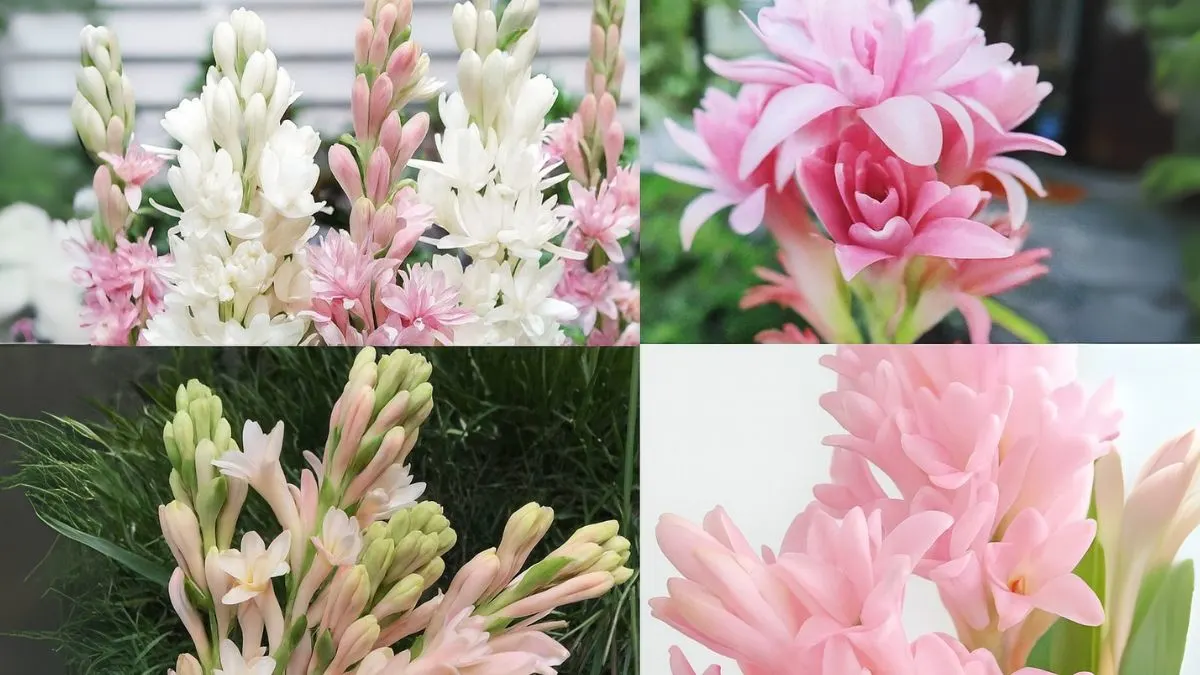Few flowers can match the timeless beauty and fragrance of Rajnigandha, also known as tuberose. Its sweet aroma makes it a favorite for gardens, bouquets, and even perfumes. Growing this plant is not just rewarding but also surprisingly easy if you follow a few simple steps.
The Rajanigandha flower grows best in well-drained soil and highly nutritious soil, combined with plenty of sunlight. I still remember planting my first bulbs in a small garden patch near my home. Within months, I was greeted with long spikes of white, fragrant blooms that added magic to summer evenings.
This article will walk you through everything you need to know—from soil preparation to bulb spacing—to grow healthy, lush Rajnigandha plants.
Choosing the Right Location

- Sunlight Needs: Rajnigandha thrives in full sun to partial shade and well-drained soil. Ideally, it should receive at least 5–6 hours of sunlight daily. While it can tolerate some shade, insufficient light will reduce blooming.
- Soil Requirements: Healthy soil is the foundation of a healthy plant. Rajnigandha needs well-drained and highly nutritious soil enriched with compost or organic matter. Sandy-loam or loamy soil types work best. Avoid waterlogged areas as the bulbs are prone to rotting.
Planting Rajnigandha Bulbs
- Collect and Prepare Bulbs: To start, collect bulbs to sow from a reliable nursery or your previous year’s harvest. Choose firm, disease-free bulbs for better results.
- Spacing and Planting Depth: When planting, dig holes and place the bulb clumps 8–10 inches apart. This spacing ensures that each bulb has enough room to develop roots and spikes without competing for nutrients. Plant the bulbs 2–3 inches deep in the soil.
Also Read: Think Hoyas Are Just Pretty Vines? Wait Till They Bloom at Night
Fertilization and Nutrition
- Choosing the Right Fertilizer: For strong growth and abundant blooms, use an 8-8-8 fertilizer of potassium, nitrogen, and phosphorus. This balanced formula encourages healthy foliage, strong stems, and long-lasting flowers.
- Feeding Schedule: Apply fertilizer once at the time of planting and then every 4–6 weeks during the growing season. Be careful not to over-fertilize, as this can lead to lush foliage with fewer flowers.
Watering the Plants
- Maintaining Soil Moisture: Watering is key, but moderation is everything. Rajanigandha flower grows best in well-drained soil and highly nutritious soil, which should remain moist but never soggy. Too much water can cause bulb rot.
A personal tip: I prefer deep watering twice a week rather than frequent shallow watering. This ensures the roots grow deeper and stronger.
Caring for Rajnigandha
- Sun and Shade Balance: Remember that Rajnigandha thrives in full sun to partial shade and well-drained soil. In extremely hot climates, some afternoon shade helps prevent leaf scorching.
- Pest and Disease Prevention: Rajnigandha is generally hardy, but keep an eye out for aphids and fungal infections. Neem oil or mild insecticidal soap works well for pest control.
- Blooming Season: The plants usually start flowering 2–3 months after planting. Long, elegant spikes of pure white flowers bloom through summer and into fall. Their fragrance makes them perfect for cut flowers and garlands.
Also Read: Think Daylilies Are Real Lilies? Here’s the Shocking Truth
Quick Guide to Growing Rajnigandha
Step |
Key Requirement |
Soil |
Rajnigandha needs well-drained and highly nutritious soil |
Sunlight |
Rajnigandha thrives in full sun to partial shade |
Bulb Spacing |
Dig holes and place the bulb clumps 8–10 inches apart |
Fertilizer |
Use an 8-8-8 fertilizer of potassium, nitrogen, and phosphorus |
Watering |
Keep soil moist but not waterlogged |
Bulb Prep |
Collect bulbs to sow that are firm and healthy |
Personal Experience
In my own garden, I experimented by planting bulbs in both shaded and sunny spots. The ones in partial shade grew taller but had fewer flowers, while those in full sun produced more blooms with a stronger fragrance. That’s why I now always choose sunny areas for planting Rajnigandha.
With the right care, your garden will soon be filled with the intoxicating fragrance of these timeless blooms.
Ready to grow your own Rajnigandha? Start today, and let your evenings be filled with the perfume of one of nature’s most enchanting flowers.






